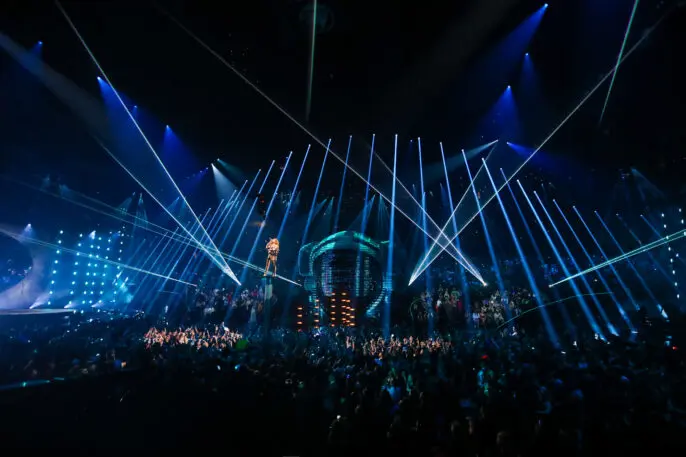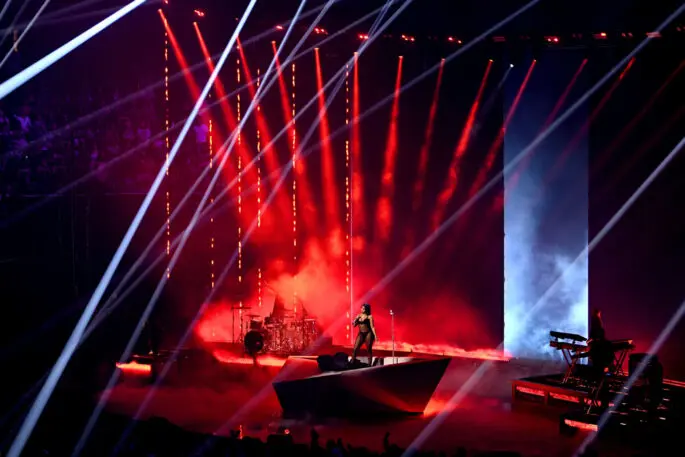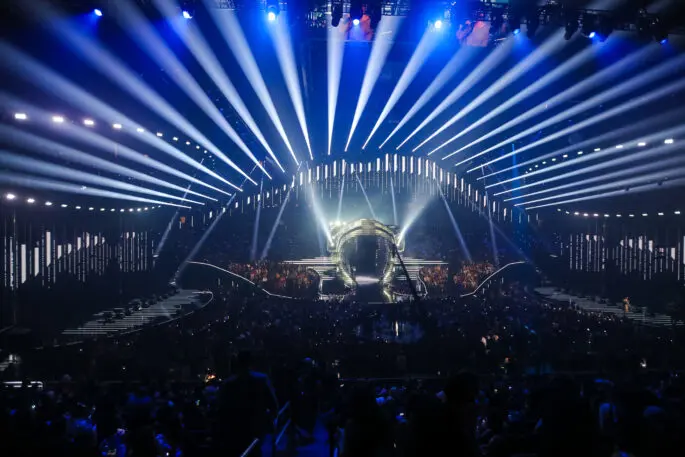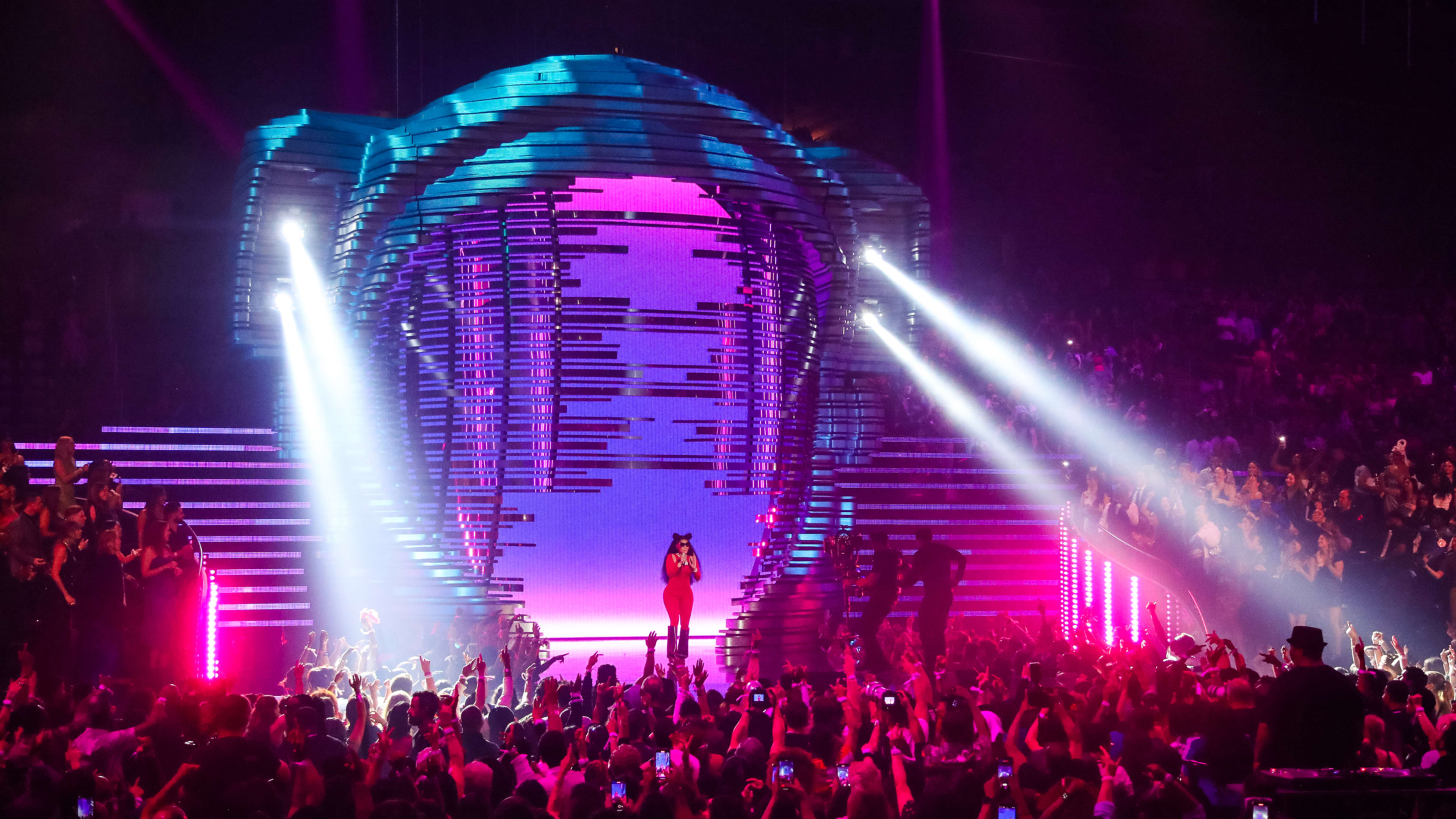MTV’s 2023 Video Music Awards left out one award when it was broadcast live Tuesday night from the Prudential Center in Newark, New Jersey. All the major honors were given, but the show should have added one more for its own spellbinding stage design. Conceptually and technically, the stage for the awards stole the show.
A sparkling, pulsing cavalcade of vinyl-like black floors and platinum white lights, the stage was a spot-on venue for pop music’s image-first self-celebration. Inspired by sound waves and fader bars, the stage design and its impressive lighting went all-in on the spectacle known well by the VMA’s nominees and winners, among them the most famous performers in the world.

The stage was created by set designer Matt Steinbrenner and lighting designer Tom Sutherland, two veterans of televised awards shows. Steinbrenner has worked on the VMAs since 2010, and previously previously worked on the designs for the Academy Awards stage in 2008, 2015 and 2016, as well as the stage for numerous Grammy awards. Sutherland has worked on productions including American Idol, the MTV European Music Awards, and the Brit Awards. The two collaborated closely to develop a design concept that could unify three large stage spaces in a way that made sense in the venue and on a television broadcast.

“My challenge this year and what I was really aiming to do was create a design language that could live in the environment and be a connective tissue,” says Steinbrenner. Visualizing audio waves, he says, became a motif that could easily flow across the venue’s large video screens as well as its narrow vertical lighting bars. “It gave us a lot of flexibility to work within that design world and figure out different ways we could interpret that within the room.”

The centerpiece of the design is the 35-foot-tall helmet of MTV’s Space Person, the flag-planting mascot of the awards’ statuette. Remade into a portal through which presenters enter the main stage, the helmet is like a discotheque stage curtain flashing with embedded light. Metallic horizontal bands mimic the equalizer bars visualizing the sound coming out of a hi-fi. Above, a sprawling screen was filled with a video installation that simulates the movement of audio waves through the air. Performance stages flank the center presentation zone in a perfect mirror image. The stages’ LED floors became their own mesmerizing screens, visually vibrating with sound.

It wasn’t intended to be a blank slate. The stage was specifically designed to accommodate the music, styles, and brands of the 16 different artists that performed during the show.
“We created larger stages than we’ve had in the past,” Steinbrenner says. “We had massive video and lighting backdrops, and we could transform the stages for each performer as needed.”

The identical stages are a pragmatic solution. One was able to be used for a performance while the other was being set up for another later in the show, enabling the broadcast to pack more acts into its more than three-hour runtime. But it wasn’t all just backstage logistics. The dual stages also offered chances for performers to move from one to the other, or even collaborate with each other.

They could even work together at the same time. Along with the central stage, the two side stages became the setting for a 10-minute tribute to hip-hop featuring more than a dozen performers, sometimes using all three stages at once.

Compared to other awards shows, Steinbrenner says MTV’s approach to the content and design of the VMAs was more open and flexible, which enabled it to showcase so many performers with so many different styles, from the earth medley performed by Shakira to the high-energy antics of Nicki Minaj.
“They let us take risks,” Steinbrenner says. “And I would say the majority of risks we took were successes.”
Recognize your brand’s excellence by applying to this year’s Brands That Matter Awards before the early-rate deadline, May 3.
